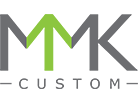In New York City, ADA-compliant signage is more than just a legal requirement — it’s a reflection of your business’s commitment to accessibility and professionalism. Whether you manage an office, retail store, or commercial building, understanding ADA signage requirements in NYC is essential to staying compliant and creating an inclusive environment for all visitors.
This guide breaks down what ADA signs are, where they’re needed, and how your NYC business can meet all the necessary regulations.
What Are ADA Signs?
ADA stands for the Americans with Disabilities Act, a federal law enacted to ensure accessibility for individuals with disabilities. Under this act, ADA signs play a key role in helping people navigate buildings safely and independently.
In New York, ADA signs are required for any permanent room or space in a building, such as:
- Restrooms
- Conference rooms
- Elevators and stairways
- Exits and entryways
- Mechanical and electrical rooms
- Offices and common areas
The law applies to new constructions, renovations, and existing buildings that are open to the public or employ staff.
For a detailed overview of ADA-compliant design options, explore our dedicated page on ADA Signs in NYC.
Key ADA Signage Requirements for NYC Buildings
To comply with the ADA and NYC building codes, your signage must follow specific design, installation, and accessibility rules. Here are the most important factors to consider:
✅ 1. Raised Letters and Braille
Text on ADA signs must be raised (tactile) and paired with Grade 2 Braille placed directly beneath the text.
- Use uppercase, sans-serif fonts like Arial or Helvetica.
- Letters must be between ⅝ inch and 2 inches high.
- Braille must be rounded and properly spaced for tactile readability.
These requirements ensure visually impaired individuals can read your signs through touch.
✅ 2. High Contrast and Non-Glare Finish
All ADA signs must use contrasting colors — for instance, white text on a black background or black on silver. Avoid shiny or reflective surfaces, as glare can make the text unreadable.
This rule applies especially to office ADA signs placed in lobbies or hallways with overhead lighting.
✅ 3. Pictograms and Symbols
Certain spaces, such as restrooms or elevators, must feature pictograms (universal icons).
Each pictogram must be:
- Enclosed in a 6-inch-high field
- Free from any text within that field
These icons help individuals quickly identify facilities, even from a distance.
✅ 4. Mounting Height and Location
Proper sign placement is crucial for compliance:
- Install signs 48–60 inches above the floor to the bottom of the tactile characters.
- Mount signs on the latch side of the door, never directly on the door itself.
- Ensure there’s clear space around the sign for tactile access.
Incorrect placement can result in ADA violations during inspections — especially in NYC’s tightly regulated commercial properties.
✅ 5. Permanent vs. Temporary Signs
Only permanent room identification signs must comply with ADA standards. Temporary signs, like event notices or room schedules, are exempt. However, maintaining a consistent style and readability across all signage reinforces your brand image and builds professionalism.
NYC Building Code & ADA Compliance
While ADA regulations are federal, New York City adds additional building code layers. For example, commercial spaces must follow Local Law 58 and NYC Building Code Chapter 11, which expand on accessibility and signage placement.
Failing to meet these requirements can lead to:
- Building inspection delays
- Costly replacement orders
- Potential legal complaints
For guidance on local approvals, see our related guide: 👉 How to Get Sign Permits in NYC: Step-by-Step Guide for Business Owners
Benefits of ADA-Compliant Office Signs
Beyond legal compliance, ADA signage offers lasting business benefits:
- Improves accessibility for all employees and customers
- Strengthens brand reputation through inclusivity
- Enhances interior aesthetics when designed professionally
- Avoids fines or code violations during city inspections
At Custom Signs NY, we specialize in designing ADA signs that meet federal and local NYC codes — without compromising your visual branding.
Get Expert Help with ADA Signage in NYC
If you’re unsure whether your building meets ADA signage standards, don’t wait until an inspection. Our team at Custom Signs NY can help you:
- Audit your current signs for compliance
- Design and fabricate modern ADA signs
- Handle installation and NYC code approvals
Ready to make your business accessible and compliant? 👉 Request a Quote today and get started with expert ADA signage solutions for your NYC office or building.
